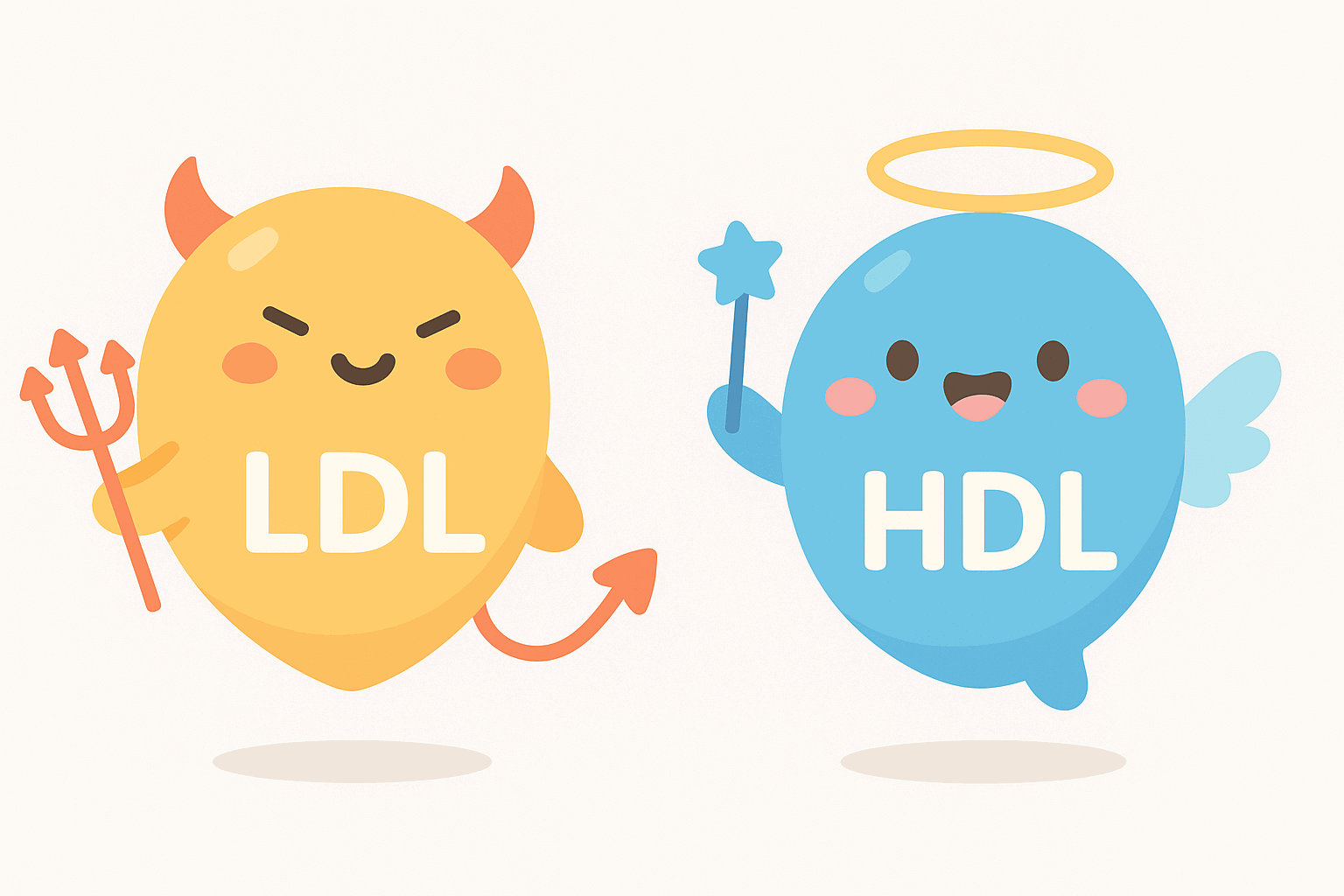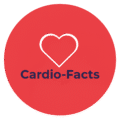
LDL and HDL cholesterol are often called “bad” and “good” cholesterol. But what do these terms really mean?
Here’s a simple, science-backed guide to LDL and HDL cholesterol, based on the latest U.S. guidelines by the American College of Cardiology (ACC) and American Heart Association (AHA). Whether you’re managing heart disease or just trying to stay healthy, this is what you need to know.
LDL and HDL Cholesterol: What’s the Difference?
| Lipoprotein | Nickname | What It Does |
|---|---|---|
| LDL | Bad | Carries cholesterol to your arteries—can lead to plaque buildup and blockages. |
| HDL | Good | Picks up extra cholesterol and returns it to your liver to be processed and removed. |
When Should You Take Action on Your Cholesterol?
The latest ACC/AHA guidelines recommend different LDL goals depending on your overall heart risk.
Here’s how it breaks down:
| You are… | What to do about your LDL |
|---|---|
| Already had a heart attack, stroke, or stent (ASCVD) | If your LDL is still 55 mg/dL or higher, even on a strong statin, your doctor may add ezetimibe or PCSK9 inhibitors to get below 55. |
| Have very high LDL (≥ 190 mg/dL) | You’ll likely need a strong statin right away—no risk calculator needed. The goal is a drop of at least 50%, ideally under 100 mg/dL. |
| Have diabetes (age 40–75) | If your LDL is 70 mg/dL or more, guidelines recommend at least a moderate-intensity statin—high intensity if you have more risk factors. |
| Aged 40–75 with no prior heart disease | Use a 10-year ASCVD risk calculator. If your risk is 7.5% or higher, talk to your doctor about starting a statin. If 20% or higher, go for a strong statin. |
👉 Use this calculator to estimate your 10-year heart risk
What’s a Healthy HDL Level?
- HDL is not a treatment target anymore.
- But low HDL (under 40 mg/dL for men, under 50 mg/dL for women) still means you’re at higher risk.
- Very high HDL (over 90–100 mg/dL) may not offer more protection, and could even reflect dysfunctional particles.
Focus on lowering LDL—it’s what actually reduces heart attacks and strokes.
What Can You Do Starting Today?
🥗 Eat for Your Arteries
- Cut down on saturated fat (fatty meats, butter, cheese).
- Completely avoid trans fats (check for “partially hydrogenated oils”).
- Eat more fiber (beans, oats, fruits, vegetables).
- Add healthy fats like olive oil, avocado, and fish.
🏃 Get Moving
Just 30 minutes of brisk walking five days a week can lower LDL and gently raise HDL.
🚭 Quit Smoking
It improves your HDL and protects the inner lining of your blood vessels.
When Lifestyle Isn’t Enough: Today’s Medications
| Medication | How It Helps | When It’s Used |
|---|---|---|
| Statins (daily pill) | Lower LDL by 30–55% | First-line for most people |
| Ezetimibe (daily pill) | Additional 20% LDL drop | Add-on if statin isn’t enough |
| PCSK9 inhibitors (injections every 2–4 weeks) | Cut LDL by 55–60% | For very high-risk cases needing LDL < 55 mg/dL |
| Inclisiran (twice-a-year injection) | 50% LDL drop | Great for people who prefer fewer doses |
| Bempedoic acid (pill) | 15–20% LDL drop | Option for those with statin side effects |
Your doctor may use these in combination to get your LDL to target.
FAQs
Should I avoid eggs?
One egg a day is fine for most people. What matters more is your overall fat intake—especially saturated and trans fats.
Can LDL be “too low”?
Not according to current evidence. Clinical trials show that even LDL levels under 30 mg/dL are safe and protective.
Can I raise my HDL?
You can raise it a bit with exercise and quitting smoking—but don’t take drugs just to raise HDL. They haven’t been shown to reduce heart attacks.
Final Thoughts
Cholesterol doesn’t need to be confusing. What matters is:
- Keep LDL low, especially if you’ve already had heart problems.
- Know your numbers and how they relate to your personal risk.
- Take action early, with lifestyle first—and add medications if needed.
⚠️ Disclaimer: The content on Cardio-Facts is for informational and educational purposes only and does not constitute medical advice. Always consult a qualified healthcare professional regarding your health. Read our full disclaimer and legal policies.
